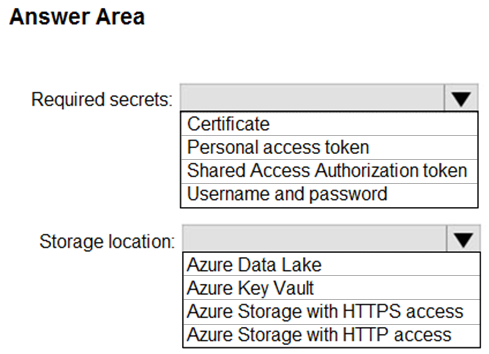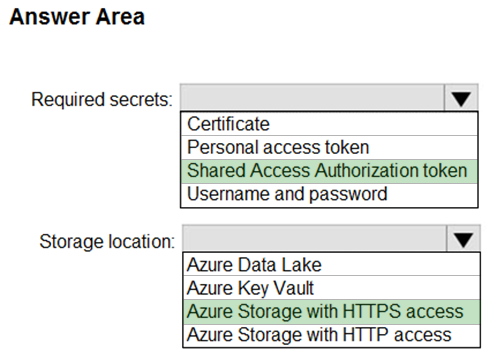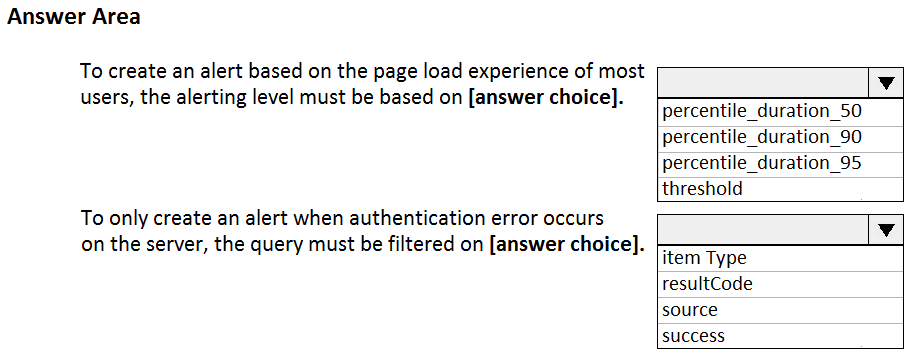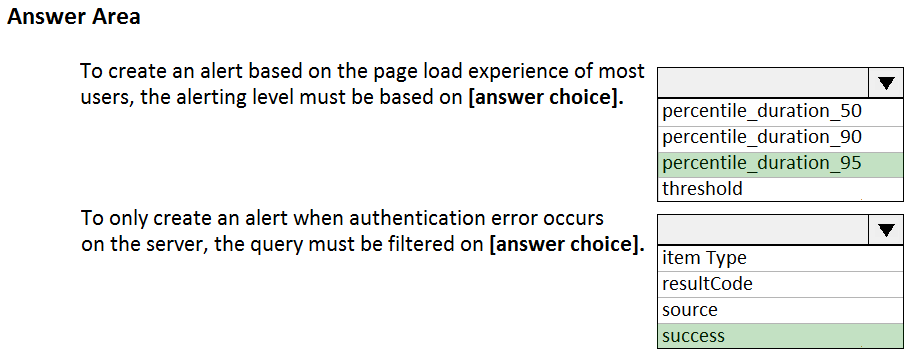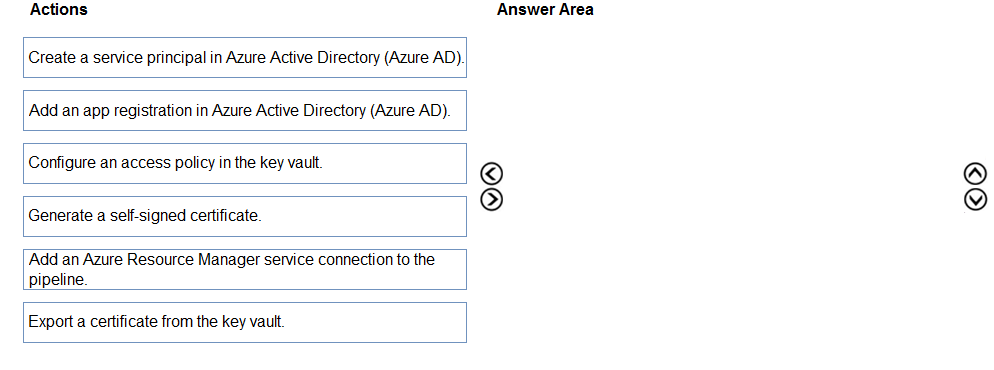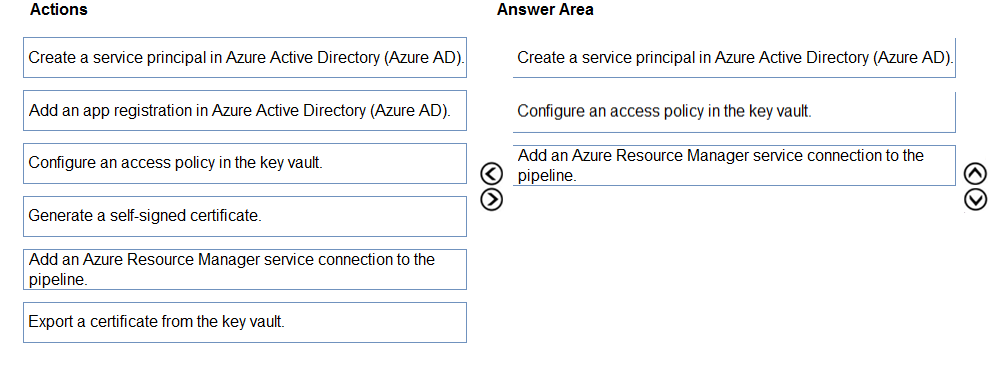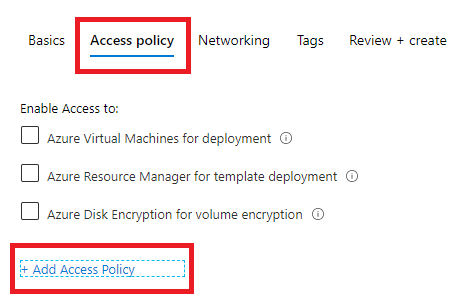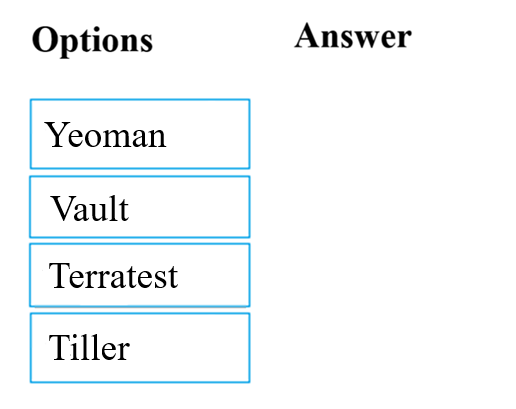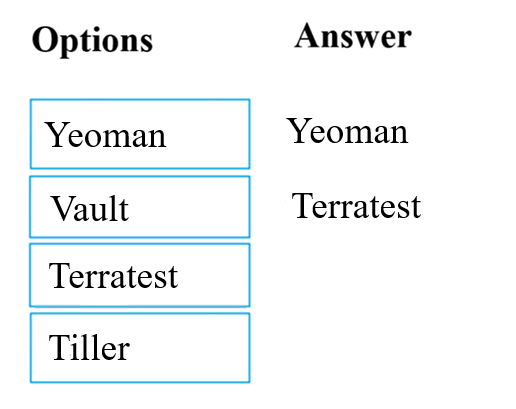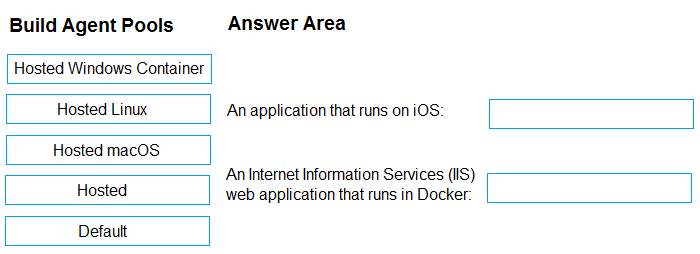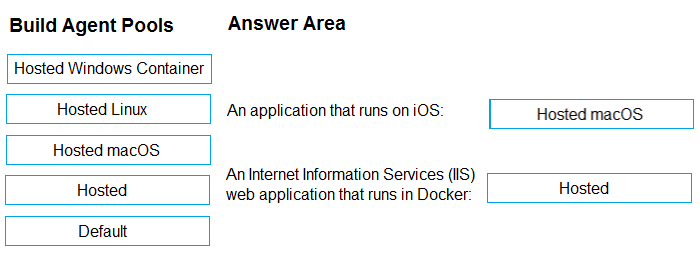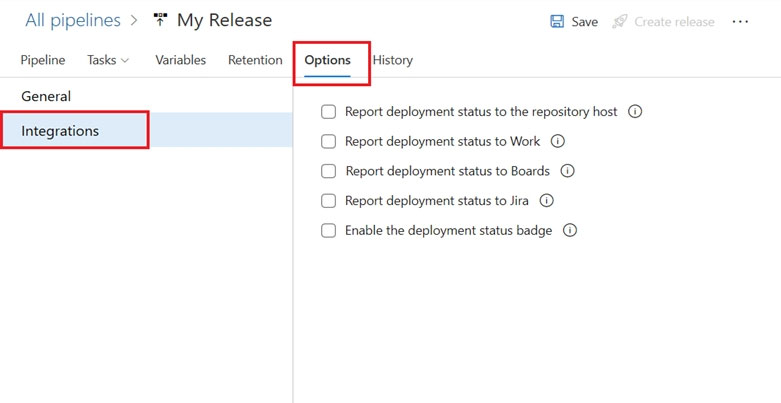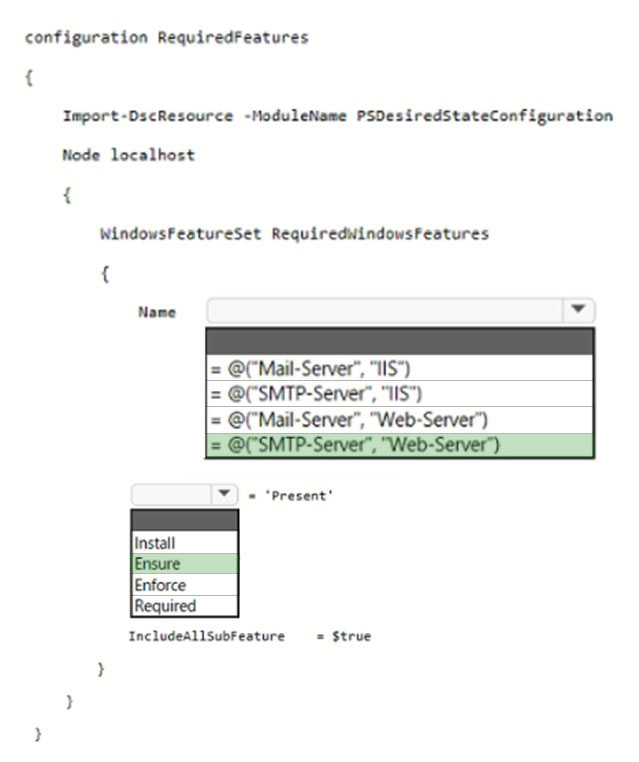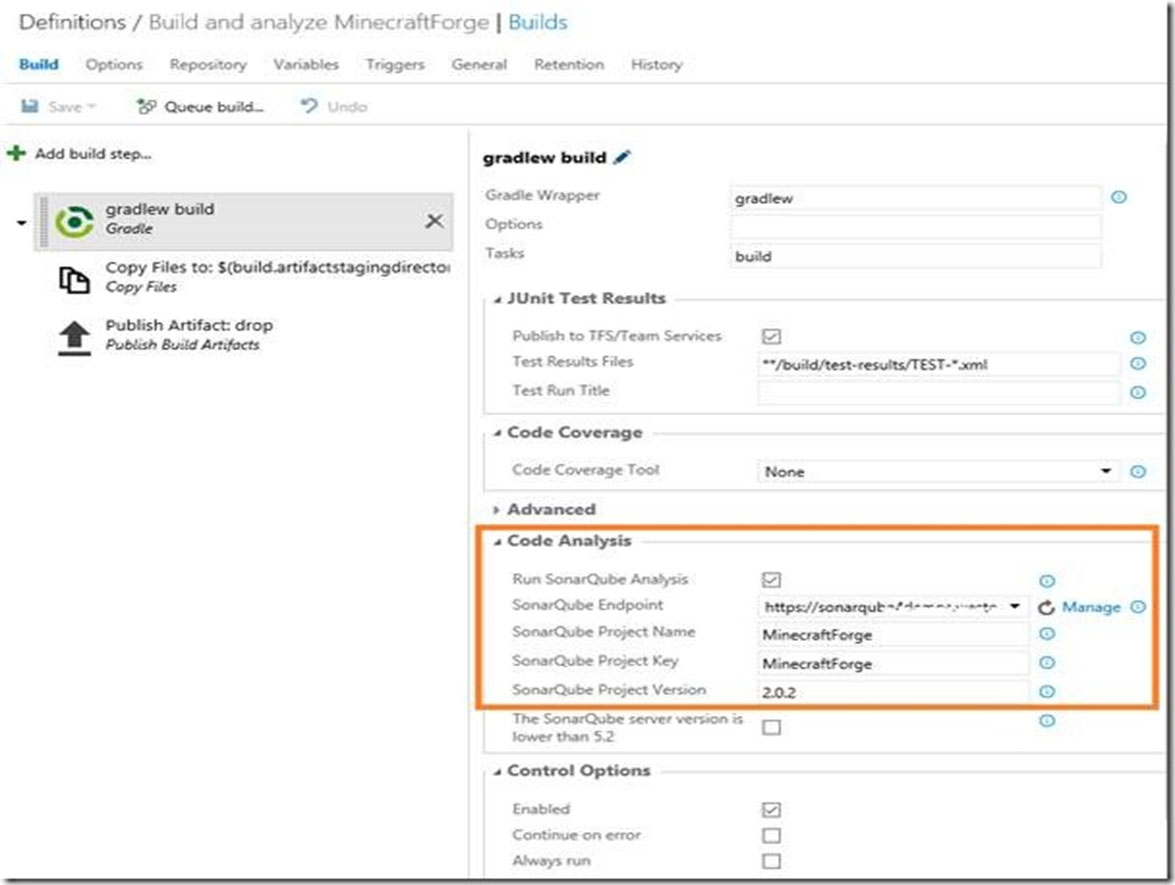AZ-400 Practice Questions Free – 50 Exam-Style Questions to Sharpen Your Skills
Are you preparing for the AZ-400 certification exam? Kickstart your success with our AZ-400 Practice Questions Free – a carefully selected set of 50 real exam-style questions to help you test your knowledge and identify areas for improvement.
Practicing with AZ-400 practice questions free gives you a powerful edge by allowing you to:
- Understand the exam structure and question formats
- Discover your strong and weak areas
- Build the confidence you need for test day success
Below, you will find 50 free AZ-400 practice questions designed to match the real exam in both difficulty and topic coverage. They’re ideal for self-assessment or final review. You can click on each Question to explore the details.
Your company is building a new solution in Java. The company currently uses a SonarQube server to analyze the code of .NET solutions. You need to analyze and monitor the code quality of the Java solution. Which task types should you add to the build pipeline?
A. Maven
B. CocoaPods
C. Xcode
D. Gulp
You have an application that consists of several Azure App Service web apps and Azure functions. You need to assess the security of the web apps and the functions. Which Azure feature can you use to provide a recommendation for the security of the application?
A. Security & Compliance in Azure Log Analytics
B. Resource health in Azure Service Health
C. Smart Detection in Azure Application Insights
D. Compute & apps in Azure Security Center
You manage projects by using Azure Boards. You manage project code by using GitHub. You have a work item that has an ID of 123. You need to link work item 123 to a new pull request. What are two ways to achieve this goal? Each correct answer presents a complete solution. NOTE: Each correct solution is worth one point.
A. In the Development section for work item 123, select Add link, and then enter the URL of the pull request.
B. To the description of the pull request, add #AB123.
C. To work item 123 add a comment that includes the URL of the pull request.
D. From work item 123, open the Links tab, select Add link, select Existing item, and then enter the URL of the commit.
HOTSPOT - How should you configure the release retention policy for the investment planning depletions suite? To answer, select the appropriate options in the answer area. NOTE: Each correct selection is worth one point. Hot Area:
You need to perform the GitHub code migration. The solution must support the planned changes for the DevOps environment. What should you use?
A. git clone
B. GitHub Importer
C. Import repository in Azure Repos
D. git-tfs
You have a project in Azure DevOps. You create the following YAML template named Template1.yml. steps: - script: npm install - script: yarn install - script: npm run compile You create the following pipeline named File1.yml. parameters: usersteps: - task: MyTask@1 - script: echo Done You need to ensure that Template1.yaml runs before File1.yml. How should you update File1.yml?
A. parameters: usersteps: extends: template: template1.yml – task: MyTask@1 – script: echo Done
B. template: template1.yml parameters: usersteps: – task: MyTask@1 – script: echo Done
C. extends: template: templatel.yml parameters: usersteps: – task: MyTask@1 – script: echo Done
D. parameters: usersteps: – template: templatel.yml – task: MyTask@1 – script: echo Done
You use Azure DevOps processes to build and deploy code. You need to compare how much time is spent troubleshooting issues found during development and how much time is spent troubleshooting issues found in released code. Which KPI should you use?
A. defect escape rate
B. unplanned work rate
C. defect rate
D. rework rate
You use GitHub for source control of .NET applications. You need to deploy a documentation solution that meets the following requirements: ✑ Documents will be written in Markdown as developers make code changes. ✑ Changes to the documents will trigger the recompilation of a static website. ✑ Users will access the documents from the static website. ✑ Documents will be stored in a GitHub repository. Which two tools can you use to compile the website? Each correct answer presents a complete solution. NOTE: Each correct selection is worth one point.
A. Word Press
B. Jekyll
C. DocFX
D. caret
E. Medium
You have an Azure subscription that contains a storage account and 20 virtual machines. You plan to use LogRhythm for aggregation and analysis of the virtual machine logs. You need to configure AzLog to export the logs and push them to the storage account. In which format should you export the logs?
A. JSON
B. EVTX
C. EVT
D. binary
Note: This question is part of a series of questions that present the same scenario. Each question in the series contains a unique solution that might meet the stated goals. Some question sets might have more than one correct solution, while others might not have a correct solution. After you answer a question in this section, you will NOT be able to return to it. As a result, these questions will not appear in the review screen. Your company uses Azure DevOps to manage the build and release processes for applications. You use a Git repository for applications source control. You need to implement a pull request strategy that reduces the history volume in the master branch. Solution: You implement a pull request strategy that uses squash merges. Does this meet the goal?
A. Yes
B. No
HOTSPOT - You are using Agile process methodologies in Azure DevOps. You need to deploy a dashboard that will provide progress reports for the following work items: • How long it took to close a work item after it was created. • How long it took to close a work item after the work was started. Which type of widget should you use for each work item? To answer, select the appropriate options in the answer area. NOTE: Each correct selection is worth one point.
You have an app named App1 that is built by using Azure Pipelines. The source code for App1 is stored in Azure Repos and contains open source libraries. You need to identify security vulnerabilities in the open source code. What should you use?
A. Mend Bolt
B. Rollbar
C. Code Climate
D. DeepSource
HOTSPOT - You have an Azure Pipelines pipeline that has the following definition.For each of the following statements, select Yes if the statement is true. Otherwise, select No. NOTE: Each correct selection is worth one point.
HOTSPOT - You plan to create alerts that will be triggered based on the page load performance of a home page. You have the Application Insights log query shown in the following exhibit.Use the drop-down menus to select the answer choice that completes each statement based on the information presented in the graphic. NOTE: Each correct selection is worth one point. Hot Area:
Note: This question is part of a series of questions that present the same scenario. Each question in the series contains a unique solution that might meet the stated goals. Some question sets might have more than one correct solution, while others might not have a correct solution. After you answer a question in this section, you will NOT be able to return to it. As a result, these questions will not appear in the review screen. You have an Azure DevOps organization named Contoso and an Azure subscription. The subscription contains an Azure virtual machine scale set named VMSS1 that is configured for autoscaling. You have a project in Azure DevOps named Project1. Project1 is used to build a web app named App1 and deploy App1 to VMSS1. You need to ensure that an email alert is generated whenever VMSS1 scales in or out. Solution: From Azure DevOps, configure the Notifications settings for Project1. Does this meet the goal?
A. Yes
B. No
DRAG DROP - You are configuring an Azure DevOps deployment pipeline. The deployed application will authenticate to a web service by using a secret stored in an Azure key vault. You need to use the secret in the deployment pipeline. Which three actions should you perform in sequence? To answer, move the appropriate actions from the list of actions to the answer area and arrange them in the correct order. Select and Place:
DRAG DROP - You are preparing to deploy an Azure resource group via Terraform. To achieve your goal, you have to install the necessary frameworks. Which of the following are the frameworks you should use? Answer by dragging the correct options from the list to the answer area. Select and Place:
DRAG DROP - You are configuring Azure DevOps build pipelines. You plan to use hosted build agents. Which build agent pool should you use to compile each application type? To answer, drag the appropriate build agent pools to the correct application types. Each build agent pool may be used once, more than once, or not at all. You may need to drag the split bar between panes or scroll to view content. NOTE: Each correct selection is worth one point. Select and Place:
You need to consider the underlined segment to establish whether it is accurate. When moving to Azure DevOps, JIRA must be replaced with the build pipelines Azure DevOps service. Select `No adjustment required` if the underlined segment is accurate. If the underlined segment is inaccurate, select the accurate option.
A. No adjustment required.
B. repos
C. release pipelines
D. boards
Note: This question is part of a series of questions that present the same scenario. Each question in the series contains a unique solution that might meet the stated goals. Some question sets might have more than one correct solution, while others might not have a correct solution. After you answer a question in this section, you will NOT be able to return to it. As a result, these questions will not appear in the review screen. You manage a project in Azure DevOps. You need to prevent the configuration of the project from changing over time. Solution: Add a code coverage step to the build pipelines. Does this meet the goal?
A. Yes
B. No
You manage a project by using Azure Boards. You manage the project code by using GitHub. You have three work items that have IDs of 456, 457, and 458. You need to create a pull request that will be linked to all the work items. The solution must set the state of work item 456 to done. What should you add to the commit message?
A. #AB456, #AB457, #AB458Completed #AB456
B. #456, #457, #458Completed #456
C. Done #AB456, #AB457, #AB458
D. #AB456, #AB457, #AB458Verifies #AB456
DRAG DROP - You are implementing a package management solution for a Node.js application by using Azure Artifacts. You need to configure the development environment to connect to the package repository. The solution must minimize the likelihood that credentials will be leaked. Which file should you use to configure each connection? To answer, drag the appropriate files to the correct connections. Each file may be used once, more than once, or not at all. You may need to drag the split bar between panes or scroll to view content. NOTE: Each correct selection is worth one point. Select and Place:
HOTSPOT - You have an Azure virtual machine named VM1 that runs Linux. You plan to deploy the Desired State Configuration (DSC) extension to VM1. You need to grant the Log Analytics agent the appropriate directory permissions. How should you complete the command? To answer, select the appropriate options in the answer area. NOTE: Each correct selection is worth one point. Hot Area:
You have an Azure subscription that contains the resources shown in the following table.DepPipeline1 and ADFPipeline1 use a single credential that is stored in Vault1. You need to configure ADFPipeline1 to retrieve the credential from Vault1. Which type of activity should you use?
A. Lookup
B. Get Metadata
C. Сoрy
D. Web
Your company makes use of Azure SQL Database Intelligent Insights and Azure Application Insights for monitoring purposes. You have been tasked with analyzing the monitoring using ad-hoc queries. You need to utilize the correct query language. Solution: You use the Transact-SQL. Does the solution meet the goal?
A. Yes
B. No
You manage projects by using Azure Boards. You have a current work item name itemA that is dependant on a work item named itemB. You need to define the dependency for itemA. What should you do in the web portal for Azure DevOps?
A. Add a Parent link to the user story of itemA.
B. From Backlogs, open the context menu, select Add link, and then select itemA. Set Link type to References and add the ID of itemB.
C. From itemA, open the Links tab, and then select Add link. Set Link type to References and add the ID of itemB.
D. From itemA, open the Links tab, and then select Add link. Set Link type to Successor and add the ID of itemB.
You configure an Azure Application Insights availability test. You need to notify the customer services department at your company by email when availability is degraded. You create an Azure logic app that will handle the email and follow up actions. Which type of trigger should you use to invoke the logic app?
A. an HTTPWebhook trigger
B. an HTTP trigger
C. a Request trigger
D. an ApiConnection trigger
Note: This question is part of a series of questions that present the same scenario. Each question in the series contains a unique solution that might meet the stated goals. Some question sets might have more than one correct solution, while others might not have a correct solution. After you answer a question in this section, you will NOT be able to return to it. As a result, these questions will not appear in the review screen. Your company has a project in Azure DevOps for a new web application. You need to ensure that when code is checked in, a build runs automatically. Solution: From the Triggers tab of the build pipeline, you select Batch changes while a build is in progress. Does this meet the goal?
A. Yes
B. No
Note: This question is part of a series of questions that present the same scenario. Each question in the series contains a unique solution that might meet the stated goals. Some question sets might have more than one correct solution, while others might not have a correct solution. After you answer a question in this section, you will NOT be able to return to it. As a result, these questions will not appear in the review screen. You integrate a cloud-hosted Jenkins server and a new Azure DevOps deployment. You need Azure DevOps to send a notification to Jenkins when a developer commits changes to a branch in Azure Repos. Solution: You create a service hook subscription that uses the code pushed event. Does this meet the goal?
A. Yes
B. No
You have an Azure subscription that contains multiple Azure pipelines. You need to deploy a monitoring solution for the pipelines. The solution must meet the following requirements: ✑ Parse logs from multiple sources. ✑ Identify the root cause of issues. What advanced feature of a monitoring tool should you include in the solution?
A. analytics
B. synthetic monitoring
C. directed monitoring
D. Alert Management
Note: This question is part of a series of questions that present the same scenario. Each question in the series contains a unique solution that might meet the stated goals. Some question sets might have more than one correct solution, while others might not have a correct solution. After you answer a question in this section, you will NOT be able to return to it. As a result, these questions will not appear in the review screen. You need to recommend an integration strategy for the build process of a Java application. The solution must meet the following requirements: ✑ The builds must access an on-premises dependency management system. ✑ The build outputs must be stored as Server artifacts in Azure DevOps. The source code must be stored in a Git repository in Azure DevOps.Solution: Install and configure a self-hosted build agent on an on-premises machine. Configure the build pipeline to use the Default agent pool. Include the Java Tool Installer task in the build pipeline. Does this meet the goal?
A. Yes
B. No
Note: This question is part of a series of questions that present the same scenario. Each question in the series contains a unique solution that might meet the stated goals. Some question sets might have more than one correct solution, while others might not have a correct solution. After you answer a question in this section, you will NOT be able to return to it. As a result, these questions will not appear in the review screen. You have an Azure DevOps organization named Contoso and an Azure subscription. The subscription contains an Azure virtual machine scale set named VMSS1 that is configured for autoscaling. You have a project in Azure DevOps named Project1. Project1 is used to build a web app named App1 and deploy App1 to VMSS1. You need to ensure that an email alert is generated whenever VMSS1 scales in or out. Solution: From Azure Monitor, configure the autoscale settings. Does this meet the goal?
A. Yes
B. No
You use WhiteSource Bolt to scan a Node.js application. The WhiteSource Bolt scan identifies numerous libraries that have invalid licenses. The libraries are used only during development and are not part of a production deployment. You need to ensure that WhiteSource Bolt only scans production dependencies. Which two actions should you perform? Each correct answer presents part of the solution. NOTE: Each correct selection is worth one point.
A. Run npm install and specify the –production flag.
B. Modify the WhiteSource Bolt policy and set the action for the licenses used by the development tools to Reassign.
C. Modify the devDependencies section of the project’s Package.json file.
D. Configure WhiteSource Bolt to scan the node_modules directory only.
Note: This question is part of a series of questions that present the same scenario. Each question in the series contains a unique solution that might meet the stated goals. Some question sets might have more than one correct solution, while others might not have a correct solution. After you answer a question in this section, you will NOT be able to return to it. As a result, these questions will not appear in the review screen. You need to recommend an integration strategy for the build process of a Java application. The solution must meet the following requirements: ✑ The builds must access an on-premises dependency management system. ✑ The build outputs must be stored as Server artifacts in Azure DevOps. ✑ The source code must be stored in a Git repository in Azure DevOps. Solution: Configure the build pipeline to use a Hosted VS 2019 agent pool. Include the Java Tool Installer task in the build pipeline. Does this meet the goal?
A. Yes
B. No
You have an Azure DevOps project that contains a release pipeline and a Git repository. When a new code revision is committed to the repository, a build and release is triggered. You need to ensure that release information for the pipeline is added automatically to the work items associated to the Git commit. What should you do?
A. Modify the Integrations options for the pipeline.
B. Modify the post-deployment conditions for the last stage of the pipeline.
C. Add an agentless job to the pipeline.
D. Modify the service hooks for the project.
HOTSPOT - You are interrogating logs by using KQL. You execute the query shown in the following exhibit.Use the drop-down menus to select the answer choice that completes each statement based on the information presented in the graphic. NOTE: Each correct selection is worth one point.
You are integrating Azure Pipelines and Microsoft Teams. You install the Azure Pipelines app in Microsoft Teams. You have an Azure DevOps organization named Contoso that contains a project name Project1. You subscribe to Project1 in Microsoft Teams. You need to ensure that you only receive events about failed builds in Microsoft Teams. What should you do first?
A. From Microsoft Teams, run @azure pipelines subscribe https://dev.azure.com/Contoso/Project1.
B. From Azure Pipelines, add a Publish Build Artifacts task to Project1.
C. From Microsoft Teams, run @azure pipelines subscriptions.
D. From Azure Pipelines, enable continuous integration for Project1.
You have a project in Azure DevOps named Project1. Project1 contains a build pipeline named Pipe1 that builds an application named App1. You have an agent pool named Pool1 that contains a Windows Server 2022-based self-hosted agent. Pipe1 uses Pool1. You plan to implement another project named Project2. Project2 will have a build pipeline named Pipe2 that builds an application named App2. App1 and App2 have conflicting dependencies. You need to minimize the possibility that the two build pipelines will conflict with each other. The solution must minimize infrastructure costs. What should you do?
A. Add another self-hosted agent.
B. Add a Docker Compose task to the build pipelines.
C. Change the self-hosted agent to use Red Hat Enterprise Linux (RHEL) 9.
D. Create two container jobs.
You use release pipelines in Azure Pipelines to deploy an app. Secrets required be the pipeline are stored as pipeline variables. Logging of commands is enabled for the Azure Pipelines agent. You need to prevent the values of the secrets from being logged. What should you do?
A. Store the secrets in the environment variables instead of the pipeline variables.
B. Pass the secrets on the command line instead of in the pipeline variables.
C. Apply a prefix of secret to the name of the variables.
D. Echo the values of the secrets to the command line.
HOTSPOT - You have a management group that contains four Azure subscriptions. Each subscription contains four resource groups. You develop a new web app named App1. You plan to deploy an instance of App1 to each resource group. You need to create a Bicep template that will be used to deploy App1. The solution must meet the following requirements: • The name of each App1 instance must be consistent for each subscription and resource group. • The name of each App Service plan used to host App1 must be consistent. How should you complete the template? To answer, select the appropriate options in the answer area. NOTE: Each correct selection is worth one point.
HOTSPOT - You plan to use Desired State Configuration (DSC) to maintain the configuration of a server that runs Windows Server 2019. The server must have the following features installed: ✑ A web server ✑ An email server How should you complete the DSC configuration file? To answer, select the appropriate options in the answer area. NOTE: Each correct selection is worth one point. Hot Area:
You have an app that is deployed to two environments named Production-A and Production-B by using Azure Pipelines. You need to configure a release pipeline that will mark the app as complete and ready for release into the Production-B environment. The solution must meet the following requirements: • Ensure that there are no active Azure Monitor alerts in the Production-A environment before the app is marked as complete. • Minimize administrative effort. What should you do?
A. To the Production-B environment stage, add a pre-deployment gate that will query Azure Monitor.
B. To the Production-A environment stage, add a post-deployment gate that will query Azure Monitor.
C. To the Production-A environment stage, add a post-deployment approval.
D. To the Production-A environment stage, add a pre-deployment gate that will query Azure Monitor.
You have a multi-tier application that has an Azure Web Apps front end and an Azure SQL Database back end. You need to recommend a solution to capture and store telemetry data. The solution must meet the following requirements: ✑ Support using ad-hoc queries to identify baselines. ✑ Trigger alerts when metrics in the baseline are exceeded. ✑ Store application and database metrics in a central location. What should you include in the recommendation?
A. Azure Event Hubs
B. Azure SQL Database Intelligent Insights
C. Azure Application Insights
D. Azure Log Analytics
Note: This question is part of a series of questions that present the same scenario. Each question in the series contains a unique solution that might meet the stated goals. Some question sets might have more than one correct solution, while others might not have a correct solution. After you answer a question in this section, you will NOT be able to return to it. As a result, these questions will not appear in the review screen. You need to recommend an integration strategy for the build process of a Java application. The solution must meet the following requirements: ✑ The builds must access an on-premises dependency management system. ✑ The build outputs must be stored as Server artifacts in Azure DevOps. ✑ The source code must be stored in a Git repository in Azure DevOps. Solution: Configure the build pipeline to use a Hosted Ubuntu agent pool. Include the Java Tool Installer task in the build pipeline. Does this meet the goal?
A. Yes
B. No
Your company is building a new solution in Java. The company currently uses a SonarQube server to analyze the code of .NET solutions. You need to analyze and monitor the code quality of the Java solution. Which task types should you add to the build pipeline?
A. Octopus
B. Chef
C. CocoaPods
D. Gradle
DRAG DROP - You have a GitHub repository named repo1 that stores the code of an app named App1. You need deploy a workflow for repo1 by using GitHub Actions. The solution must meet the following requirements: • Scan on pushes to the main branch. • Scan on pull requests to the main branch. • Scan on pull requests to any branch that has a prefix of releases/. • Scan all the files in the subdirectories of the src directory. How should you complete the code? To answer, drag he appropriate values to the correct targets. Each value may be used once, more than once, or not at all.
DRAG DROP - Your company has a project in Azure DevOps named Project1. All the developers at the company have Windows 10 devices. You need to create a Git repository for Project1. The solution must meet the following requirements: • Support large binary files. • Store binary files outside of the repository. • Use a standard Git workflow to maintain the metadata of the binary files by using commits to the repository. Which three actions should you perform in sequence on each developer’s device? To answer, move the appropriate actions from the list of actions to the answer area and arrange them in the correct order.
You have a project in Azure DevOps named Project1. You implement a Continuous Integration/Continuous Deployment (CI/CD) pipeline that uses PowerShell Desired State Configuration (DSC) to configure the application infrastructure. You need to perform a unit test and an integration test of the configuration before Project1 is deployed. What should you use?
A. the PSScriptAnalyzer tool
B. the Pester test framework
C. the PSCodeHealth module
D. the Test-DscConfiguration cmdlet
You have a multi-tier application. The front end of the application is hosted in Azure App Service. You need to identify the average load times of the application pages. What should you use?
A. Azure Application Insights
B. the activity log of the App Service
C. the diagnostics logs of the App Service
D. Azure Advisor
You have an Azure virtual machine that is monitored by using Azure Monitor. The virtual machine has the Azure Log Analytics agent installed. You plan to deploy the Service Map solution from the Azure Marketplace. What should you deploy to the virtual machine to support the Service Map solution?
A. the Dependency agent
B. the Telegraf agent
C. the Windows Azure diagnostics extension (WAD)
D. the Azure monitor agent
Free Access Full AZ-400 Practice Questions Free
Want more hands-on practice? Click here to access the full bank of AZ-400 practice questions free and reinforce your understanding of all exam objectives.
We update our question sets regularly, so check back often for new and relevant content.
Good luck with your AZ-400 certification journey!


